Firstly, I have downloaded some LUIS model JSON for doing this, as shown in the following screenshot:

Next, I have written a sample C# console app for converting LUIS Model Schema into RASA.
Here is the LUISModel model class.
using Newtonsoft.Json;
using System;
using System.Collections.Generic;
namespace JSONConversion.Models
{
public class LuisSchema
{
public string luis_schema_version { get; set; }
public string versionId { get; set; }
public string name { get; set; }
public string desc { get; set; }
public string culture { get; set; }
public List<Intent> intents { get; set; }
public List<entity> entities { get; set; }
public object[] composites { get; set; }
public List<Closedlist> closedLists { get; set; }
public List<string> bing_entities { get; set; }
public object[] actions { get; set; }
public List<Model_Features> model_features { get; set; }
public List<regex_Features> regex_features { get; set; }
public List<Utterance> utterances { get; set; }
}
public class regex_Features
{
public string name { get; set; }
public string pattern { get; set; }
public bool activated { get; set; }
}
public class Intent
{
public string name { get; set; }
}
public class entity
{
public string name { get; set; }
}
public class Closedlist
{
public string name { get; set; }
public List<Sublist> subLists { get; set; }
}
public class Sublist
{
public string canonicalForm { get; set; }
public List<string> list { get; set; }
}
public class Model_Features
{
public string name { get; set; }
public bool mode { get; set; }
public string words { get; set; }
public bool activated { get; set; }
}
public class Utterance
{
public string text { get; set; }
public string intent { get; set; }
[JsonProperty("entities")]
public List<Entities> Entities { get; set; }
}
public class Entities
{
[JsonProperty("entity")]
public string Entity { get; set; }
public int startPos { get; set; }
public int endPos { get; set; }
}
}
Here is the RASAModel model class:
using Newtonsoft.Json;
using System;
using System.Collections.Generic;
namespace JSONConversion.Models
{
public class RASASchema
{
public Rasa_Nlu_Data rasa_nlu_data { get; set; }
}
public class Rasa_Nlu_Data
{
public List<Entity_Synonyms> entity_synonyms { get; set; }
public List<Regex_Features> regex_features { get; set; }
public List<Common_Examples> common_examples { get; set; }
}
public class Entity_Synonyms
{
public string value { get; set; }
public List<string> synonyms { get; set; }
}
public class Common_Examples
{
public string text { get; set; }
public string intent { get; set; }
public List<Entity> entities { get; set; }
}
public class Entity
{
public string entity { get; set; }
public string value { get; set; }
public int start { get; set; }
public int end { get; set; }
}
public class Regex_Features
{
public string name { get; set; }
public string pattern { get; set; }
}
}
And I have written 2 methods which parse the LUISModel model class for synonyms from the phraselist section and adds them in the common_examples object in RASA_NLU training object.
using JSONConversion.Models;
using Newtonsoft.Json;
using System;
using System.Collections.Generic;
using System.IO;
using System.Linq;
using System.Threading.Tasks;
namespace JSONConversion.Services
{
public static class JSONHelper
{
public static Task<string> ReadFromFile(string FilePath)
{
try
{
Task<string> readFromFileTask = Task.Run<string>(() =>
{
return File.ReadAllText(FilePath);
});
return readFromFileTask;
}
catch(Exception ex)
{
throw;
}
}
public static RASASchema ConvertLUISJSON(string StringifiedLUISJson)
{
try
{
LuisSchema luisSchema = JsonConvert.DeserializeObject<LuisSchema>(StringifiedLUISJson);
RASASchema rasaSchema = new RASASchema();
rasaSchema.rasa_nlu_data = new Rasa_Nlu_Data();
rasaSchema.rasa_nlu_data.common_examples = new List<Common_Examples>();
rasaSchema.rasa_nlu_data.entity_synonyms = new List<Entity_Synonyms>();
rasaSchema.rasa_nlu_data.regex_features = new List<Regex_Features>();
luisSchema.closedLists.ForEach(x =>
{
x.subLists.ForEach(y =>
{
rasaSchema.rasa_nlu_data.entity_synonyms.Add(new Entity_Synonyms()
{
value = y.canonicalForm,
synonyms = y.list
});
});
});
luisSchema.model_features.ForEach(x =>
{
rasaSchema.rasa_nlu_data.entity_synonyms.Add(new Entity_Synonyms()
{
value = x.name,
synonyms = x.words.Split(',').ToList()
});
});
luisSchema.regex_features.ForEach(x =>
{
rasaSchema.rasa_nlu_data.regex_features.Add(new Regex_Features()
{
name = x.name,
pattern = x.pattern
});
});
luisSchema.utterances.ForEach(x =>
{
Common_Examples rasaUtterances = new Common_Examples();
rasaUtterances.text = x.text;
rasaUtterances.intent = x.intent;
List<Entity> listOfRASAEntity = new List<Entity>();
x.Entities.ForEach(y =>
{
listOfRASAEntity.Add(new Entity()
{
start = y.startPos,
end = y.endPos,
entity = y.Entity,
value = x.text.Substring(y.startPos, (y.endPos - y.startPos) + 1)
});
});
rasaUtterances.entities = listOfRASAEntity;
rasaSchema.rasa_nlu_data.common_examples.Add(rasaUtterances);
});
return rasaSchema;
}
catch (Exception ex)
{
throw;
}
}
}
}
And just called those JSON conversion methods to convert LUIS Models into RASA models.
using System.Text;
using JSONConversion.Services;
using System.IO;
using Newtonsoft.Json;
using Newtonsoft.Json.Serialization;
namespace JSONConversion
{
class Program
{
static void Main(string[] args)
{
string json = JsonConvert.SerializeObject(JSONConversion.Services.JSONHelper.ConvertLUISJSON(JSONHelper.ReadFromFile(@"C:\Users\xyz\Documents\luis.json").Result), new JsonSerializerSettings()
{
ContractResolver = new CamelCasePropertyNamesContractResolver(),
Formatting = Formatting.Indented
});
File.WriteAllText(@"C:\Users\xyz\Desktop\RASA\data\examples\RasaFormat.json", json, Encoding.UTF8);
}
}
}
After getting the RASA model, you can just simply train RASA for synonyms.
